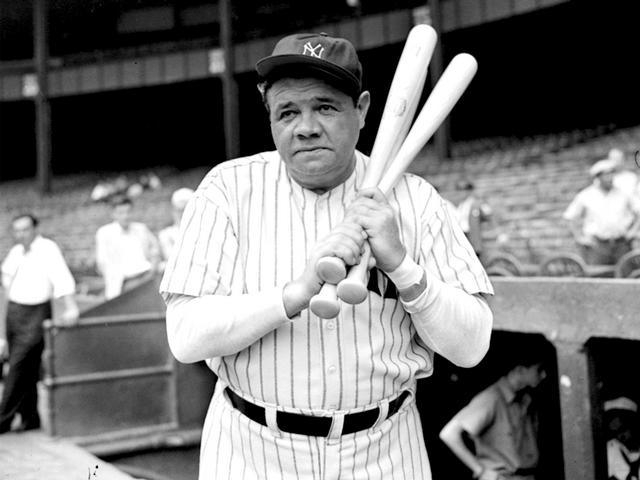
Everybody loves a home run slugger. There’s nothing quite like the excitement of watching batters with pop in their bats blast the ball out of the park whenever they step to the plate. Yet, in the post steroid baseball era, consistent home run sluggers, guys that can be counted on to hit thirty or more home runs year after year, is diminishing.
Soaring individual home run totals were a rarity in 2013. Only two major league sluggers, Chris Davis and Miguel Cabrera went yard 40 or more times with Davis leading the major leagues with 53 four-baggers and Cabrera finishing second with a healthy 44.
Only 12 other big leaguers hit 30 or more homers in 2013, and just three from the National League. In fact, since 2010, National League sluggers pounding 40 or more HR’s have become nearly extinct. Ryan Braun did it in 2012, but no other NL batter has reached that magic total over the last four years.
Take a look at baseball’s four year home run totals.

The 2013 season was an especially disastrous one for longball hitters in the National League. Only three NL batters went yard 30 or more times this summer. That’s stunning.
Let’s hope it’s not a trend. With so many Met fans clamoring to add a HR slugging bat to our roster during this off-season, it does make you wonder just where that bat would be coming from.
In yesteryear, many sluggers showed uncanny consistency stringing together seasons with 30 or more home runs. Mickey Mantle did it 8 straight times. Willie Mays had a run of 11 of 13 years missing each of his off-years by a single home run. Met great Mike Piazza had a run of 11 of 12 seasons, Mike Schmidt 14 of 15, and Willie Stargell 15 of 17.
Unlike the old days, consistency of this sort in recent years is hard to find. Since 2010, Miguel Cabrera is the only player to total 30 + home runs every year. Five players; Prince Fielder, Adam Dunn, Albert Pujols, Adrian Beltre and Jay Bruce have reached that mark in three of the last four years.
Examining the home run totals unearthed some real surprises. David Ortiz never hit more than 20 home runs until he was 27 years old. Rafael Palmeiro never climbed to 30+ HR’s until he was 28. Justin Upton has only reached 30 dingers once in seven big league seasons. Adrian Beltre, consistent since 2010, had his first 30+ home run season in his 13th big league year. Matt Kemp has only had one 30+ home run total in eight seasons, Joey Votto one in seven campaigns, and Robinson Cano has reached 30 or more HR’s once in his nine years in the big leagues.
And, even the great home run sluggers many times had a disastrous campaign, at least on their standards, somewhere along the line. For example at 26 years old, Willie McCovey hit .220 with 18 HR’s and only 54 RBI’s. When he was 27 years old, Mark McGwire hit 21 HR’s with 75 RBI’s, batted .201 with a .383 slugging percentage. It happens.
All these home runs numbers leave me wondering about Ike Davis. It’s not like Ike Davis doesn’t have the power potential to hit the ball out of the park. Just one season removed, Davis put himself on the 30+ leader board slamming the ball out of the yard 32 times, with all but 5 of those home runs coming in his final 100 games.
The beginning of the 2013 season was a train wreck for Davis. After he was demoted to Las Vegas, he returned to Flushing and was showing improved offensive output when an oblique injury put him on the shelf for the remainder of the season.
Every indication leads Met fans to believe the front office has run out of patience with Davis. The fear of the demoralizing effect a third straight ice cold spring would have on the team has trumped the longball potential Davis brings to the team.
With so few baseball sluggers slamming the ball consistently our of the park (only 3 – 30+ HR hitters in the NL in 2013) and with no other internal promising options at first base at the moment, I can’t help but wonder if this direction is unwise or premature.
Every time I think I have run out of patience with Davis, I consider the alternative, Lucas Duda, and I find a little extra patience in my tank. There is very little difference in their stat line, although, Duda’s defensive WAR totals, whether as an outfielder or a first baseman are scary.
AB R 2B HR RBI BA OBP SLG OWar DWar Lucas Duda 1,104 134 58 44 153 .246 .342 .424 3.6 -6.3 Ike Davis 1,488 196 81 67 219 .242 .334 .434 4.2 -1.5
On paper, the differences seem pretty insignificant. In my gut, there’s a much wider gap that tips in favor of Davis. When I consider both Davis and Duda in terms of positive potential at someday regularly posting 30+ HR numbers, I come down on the side of Davis again. And, when I consider which guy I want patrolling the bag at first base, especially with an infield of questionable defensive acumen, it’s Davis by a long shot.
If the Mets don’t go outside the organization to fill their first base needs, I think they need to think long and hard about who they tab as next year’s starting first baseman. The cost of now is sometimes a loss for the future. Patience never guarantees longterm success, but it dramatically increases the odds.















